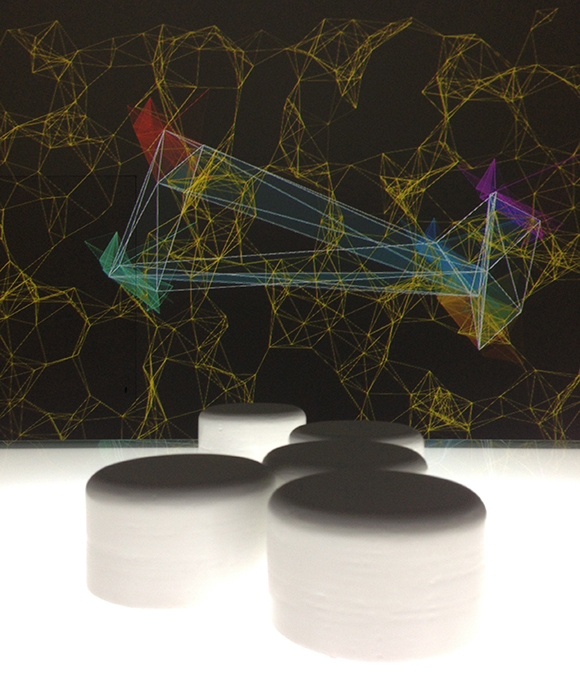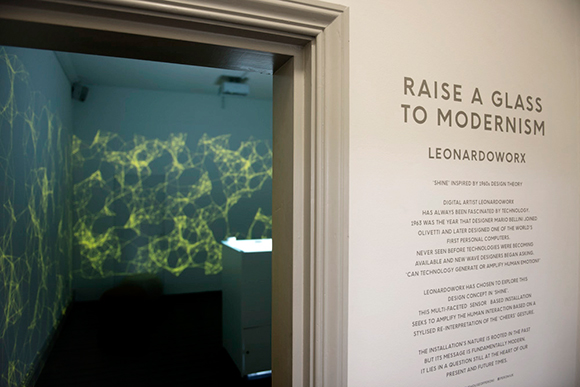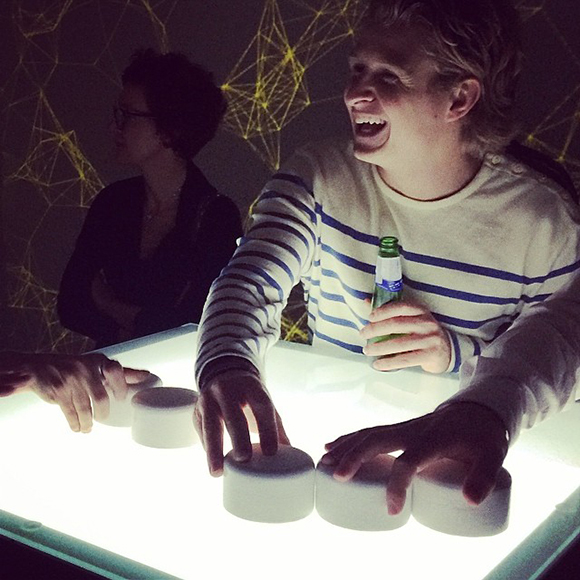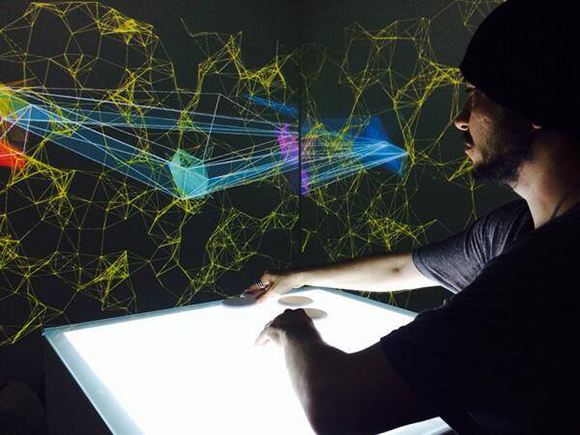MACHAS
News - All the latest news straight from the artists themselves




Leonardoworx testing the installation one last time
‘Shine’: Leonardoworx x House of Peroni
We have to admit it: here at Machas we have a soft spot for the House of Peroni, the London-based month-long celebration of Italian creativity.
It all started this spring when we were contacted by M&C Saatchi to unleash Leonardoworx multi-faceted talent on the House residency’s theme: 1963, the birth year of the Nastro Azzurro blend.
Leonardoworx jumped at the idea paying tribute to a year that marked a pivotal moment for contemporary design and music. In the design world architect Mario Bellini joined Roberto Olivetti and Pier Giorgio Pianotto at Olivetti to start working on the first very personal computer of human history ( the P101).
Olivetti broke the concept of desk computer, minimising the bulky and very expensive IBM RAMs into hand-held components woven out of intertwined piano strings. While Bellini gave shape to this historic change and elaborated a machine designed to feel natural to the user, Luciano Berio brought contemporary music to new frontiers, leaving the traditional concept of “structured score” he ventured into the realm of “sound events” where music becomes geometry.
Leonardoworx, a trained musician as well as what we informally call in awe a “ninja nerd master”, has been literally brought up with the influences of those visionaries — his very first computer was an Olivetti designed by Mario Bellini! Leonardoworx celebrated the cultural richness of 1963 with “Shine”, a multi-sensorial immersive installation in which user controlled visuals and sounds enhanced social interaction.
The fluctuating polygons controlled by the Guests travel against a code-generated oniric landscape, creating each time new shapes and new sounds as they draw closer together, in a metaphoric re-enactment of the gesture of cheering.
As the experience is naturally intuitive and playfully engaging the work that went behind “Shine” is really impressive and required all of Leonardoworx’ knowledge to deliver it in an exceptionally fast turn around— a month!
Beside his coding skills and musical education, he brought to the table his physics notions to allow the polygons a floating movement rather than a boring mouse-like scrolling and, most importantly his hacker skill, the latter being instrumental in making the whole react vision technology work. The react vision technology employs an external USB camera that captures the movements of the IDs and translates them into what is written in the code. Unfortunately Apple’s then new iOs, Mavericks, could read only between 3 and 5 fps instead of the standard 30 fps and if Leonardoworx didn’t take the matter in his own hands “we would have got an installation looking like a stop-motion video!”, he recalls. A couple of hours later he managed to changed the settings to 120 fps, allowing a incredibly smooth interaction.
The installation was extremely successful and fun to use. For Leonardoworx “the challenge was to connect people using the installation as an intuitive and immersive language to communicate with. Many new relationships started in Shine installation room while drinking a Nastro Azzurro!”
On the eve of the new House of Peroni residency which will feature Machas’ hand made paper cut master Ufo5 and Cannes-winner illustrator Ray Oranges we know that with Leonardoworx’ installation we set the bar high.
All the information on the past and upcoming editions of the House of Peroni here